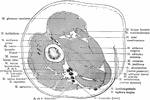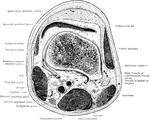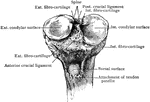Tibia and Fibula
"The leg consists, like the forearm, of two bones. The larger, a strong, three-sided bone with…

Broken Tibia
"When a bone is broken, blood trickles out between the injured parts, and afterwards gives place to…

Antique Table Support Trapezophoron
The Antique table support is made out of marble. The ornamentation on the leg is possibly from a table…

Medians Drawn Drawn to Legs of Isosceles Triangles
Illustration to show the medians drawn to the legs of an isosceles triangle.

Isosceles Triangle With Parallelogram inside
Illustration to show that if from any point in the base of an isosceles triangle parallels to the legs…
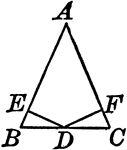
Perpendiculars Dropped From Midpoint of Base to Legs of Isosceles Triangles
Illustration to show the perpendiculars dropped from the midpoint of the base to the legs of an isosceles…
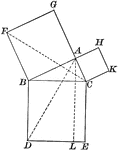
Right Triangle
Illustration of a right triangle used to show the Pythagorean Theorem (the square of the hypotenuse…
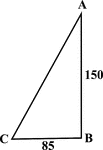
Right Triangle With Sides 85 and 150
Illustration of a right triangle with legs labeled 150 and 85. This could be used to find the hypotenuse…



